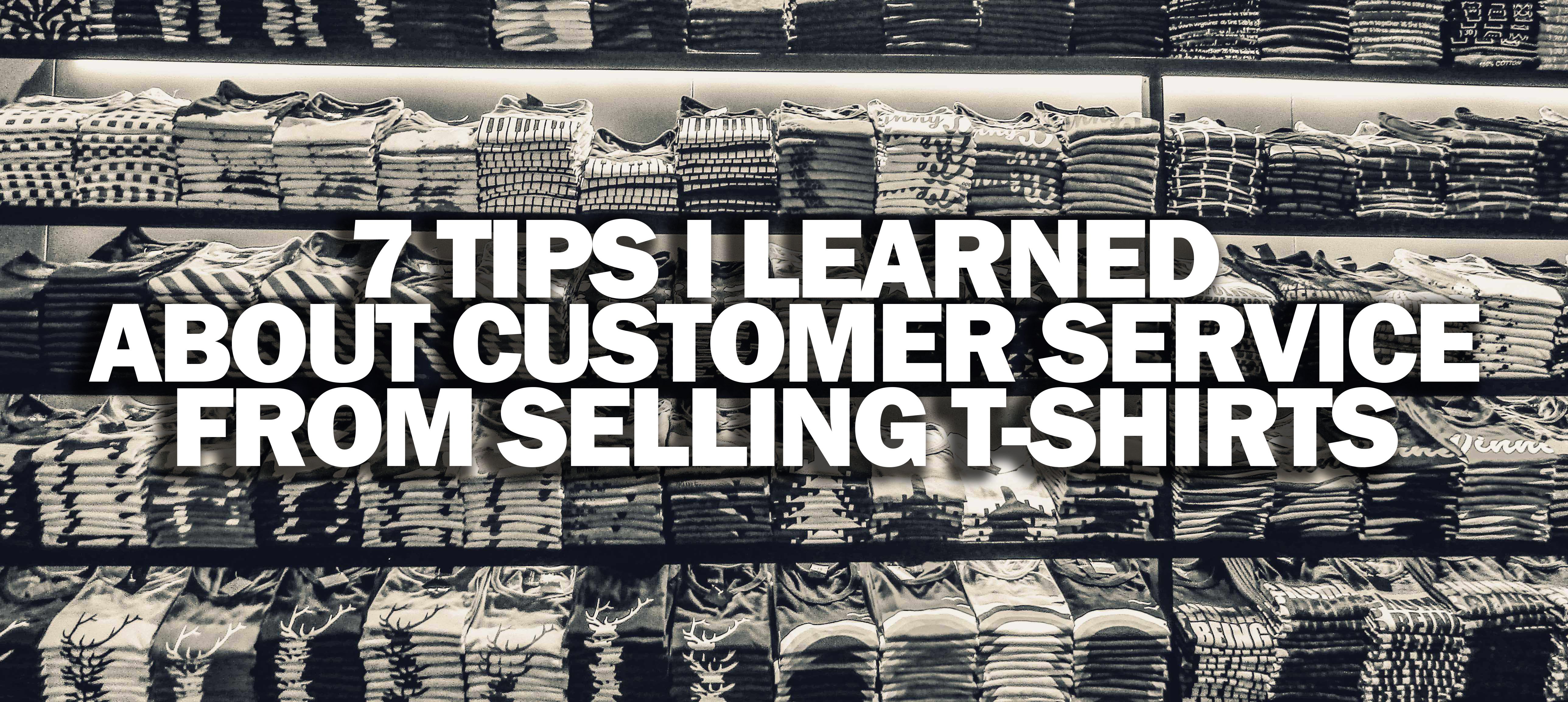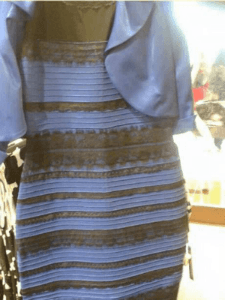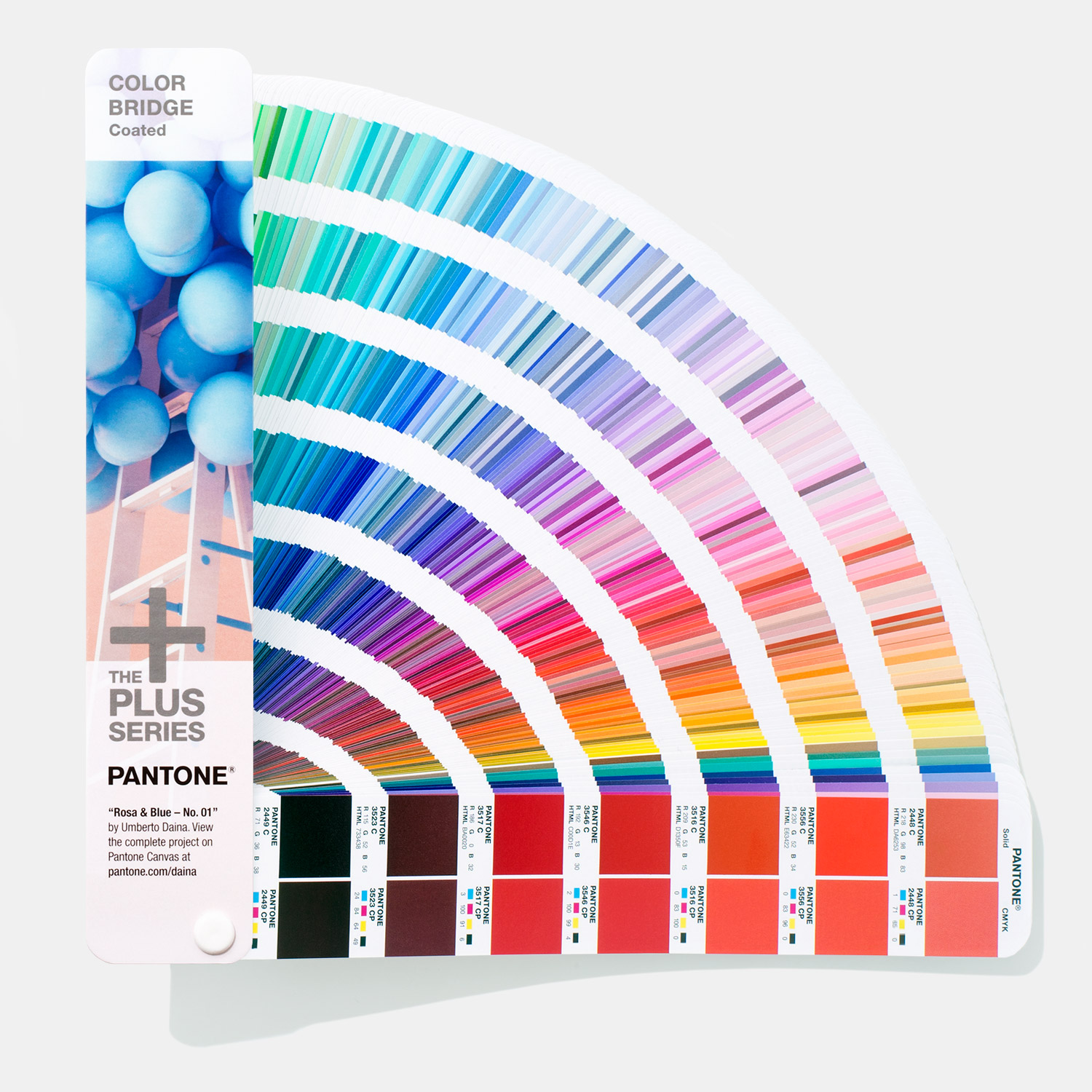7 Tips About Customer Service I Picked Up From Selling Custom Apparel

I started designing shirts when I was 13 years old. I had won a T-Shirt contest for a school club which elected my design to be printed and worn by my entire school. It was a thrilling concept to get my artwork on a shirt, and from there on out I was hooked.
Through college I continued my passion by studying art and design, specifically graphic design and print making. I also used my knowledge in design and print as leverage to create a clothing line. This eventually led me to opening my own Screen Printing Shop that continues to service customers in producing their custom apparel ideas.
Yes...I had obtained years and years of experience in designing and producing t-shirts.
This is why I was dumbfounded when in my first year of opening my shop, a customer had the nerve to argue with me about what the color pink was. I had worked with this customer to create a new design which was approved and sent to production. A couple days later the order was ready and they came to pick-up their shirts.
The moment when a customer opens their box to see their project is always a weird limbo between excitement that they will love it and horror that they will hate it.
In this specific case, this customer opened the box and gave that confused look that instantly tells me that I am in trouble.
Unnamed Customer: “This is not what I ordered.”
Me: "What do you mean? We put a lot of hard work to make sure that you got exactly what you wanted."
Unnamed Customer: "We discussed that the print color would be pink, not red."
Me: "This IS the color pink. I will show you the ink can and you will see the label says pink."
(What I really wants to say is: "I do this for a living, don't you think I know the difference between pink and red.")
Unnamed Customer: "This is red. This is not what I expected and I am not happy with this work."

This is the type of moment that used to deflate me. I feel like I worked hard to get the customer a high quality product, which I was happy to show them because I take pride in my work...only to be shot down by failure. Initially it was easy to get angry and think the customer is fishing for a free order. I went home that night in a terrible and bitter mood.
It is small moments such as this that really helped me grow in servicing my customers. What I needed to do was figure out how the confrontation occured and I really needed to reflect on each step of my correspondence with that customer that led to the point of disappointment.
Here are 7 things I learned about the customer throughout my many years of selling them custom printed merchandise.
1.The customer is always right
I know this statement is a hot-button topic among business owners because so many of us have had bad experiencs dealing with that customer who, by no means, should ever be granted the benefit of the doubt. They were just flat out wrong and disrespectful, undermining my expertise as a business owner.
I find this the most important rule to list first because it sets a pattern for most of the other rules: Selflessness
Sure we all got into business to become our own boss, make some money and live by our own rules… but guess what… You don’t have a business if you don’t have people to sell to. I know… Shocker…
Customer Service is exactly what it reads as. How does your company handle their relationship with your customers? How do you provide your business/service/product to the customer in a mutually beneficial way?
So…Yes, the customer IS always right, even when they are wrong. Even if they are claiming the sky is green and the American Flag is Orange, Grey and Purple. In this specific customers eyes…they are justifying their statements. While in your mind (and most of the worlds mind) the sky is universally accepted as blue. The question really isn’t is the customer always right? The real focus is WHY the customer is right. Each business and service is a unique ecosystem with their own quirks and rules. The customer
In my specific case here, I did not take into account that everyone in the world sees color differently. Remember this epic debate:
What Color is this Dress?
%20(1).png)
I had hair splitting arguments with my friends about the color of the dress. Some of my buddies were absolutely sure that the dress was White and Gold but I was dead certain that the color of the dress was Blue and Black. Without a doubt, clear as day, the gosh darn dress is blue.

It came to a point where I couldn’t tell if my friends were messing with me, or if there was just some cray phenomena happening with the pattern, color and lighting. It turns out that the later was true, and because certain elements of the dress pattern, lighting and color, certain people saw the dress a different way. It opened up the conversation that, everyone sees color differently.
FOR THE RECORD… I WAS CORRECT. THE DRESS WAS BLUE AND YOU SHOULD NEVER FIGHT WITH A GRAPHIC DESIGNER ABOUT COLOR!
So, if I have a business where replicating a customers vision of color is extremely important, I need to take steps that absolutely assure that we are on the same page of which color THE CUSTOMER wants. I need to put all my ego about color theory aside and get into the mind of my customer who hasn’t studied color. The solution really was simple, which is using a universal code that applies number to every possible shade of printable color. This comes in the format of a book that the customer can view called a PANTONE PMS CHART.

If a customer can look at a chart and point out that they want pink… specifically Pink 238C… We have a universal way to agree that we are viewing that same color.
The reason the customer was hands-down right the first time I encountered the issue is because I hadn’t thought of using a Pantone Book to select colors. My ego got in the way and I assumed that because I knew color, I could read my customers mind and immediately understand what they were envisioning. If you don’t take the steps to ensure that the debate never occurs on who is right or wrong, then you are setting yourself up for a successful customer relationship. It take a lot of hard work to put yourself in your customers shoes and think of every step of the communication process that can be refined, but it is essential work.
The worst thing that can happen then, is the customer simply is not happy with THEIR own choices. While it is a bummer if they leave bummed out, they will at least know that you did everything you could to ensure that you provided what you promised. You can’t prevent a customer from subjectivly not liking something, but you can control everything else…and you should.
This leads me to my next point.
2.You cannot assume the customer knows anything about your service or product

Going hand-in-hand with my previous point: Don’t assume ANYTHING. Treat every customer and job as if they have absolutely no knowledge about the process, product or service. This doesn’t mean you have to be a broken record and repeat yourself every single time a return customer places a new order, but you DO need to have the information about your policies and standards in front of their eyes somewhere.
The way I do most of this is by placing our policies and standards on our production proofs that must be approved and signed off by our customers for each job. By approving the proof, they acknowledge that they have read or understand the fine print.
I repeat this process in my email signatures. Although it doesn’t create an agreement between my customer and I, it puts it in an accessible and unobtrusive area for the customers reference.
I am not shoving my policies down their throats, but it is definitely important to make sure your customer is aware of certain policies.
If you have a first time customer, take the time to explain certain policies to them that they may not be aware of. Even if you know that they will be signing an agreement at some point, don’t assume that they are going to read it. How often do you read a agreement policy before you sign it?
This is another case of needing to put yourself in the shoes of your customer and think about the aspects you would like to know before closing a deal.
3.The customer is a human with their own wants and needs. Treat your customers as if they were yourself.
Your customer doesn’t eat, sleep and breath your business like you. Your customer is a human, with feeling and emotions and they should be treated as such. Once you start detaching a customer with a name and a face, you are dehumanizing them. Email and instant messaging is a great tool to quickly communicate with customers, but if possible, face-to-face interactions or phone calls is important to developing a personal relationship with your customer. 99% of my daily interaction with my customers is done through email, but i always push to meet in person if nothing more to begin a tangible relationship with them. At the absolute least, this will help you begin to think of your customer as a d
4.The customer ALWAYS has another option. Make them remember why they chose you.
Consider yourself lucky. The hardest part is getting the customer in the door. Now all you have to do is keep them happy. Once you start complaining about a customer, just reflect on the fact that there is someone out there who would be very happy to take them from you. You have to give your customer an experience that doesn’t make them question why they came to you in the first place. No, this doesn’t mean you have to be perfect 100% of the time. People are human. Mistakes get made. A customer should never feel like they aren’t your priority.
5.Your customer will ALWAYS seek out dishonesty.
Always be honest. One of the biggest strengths you can have as a business owner is honesty. If a customer knows you are honest, they will never feel cheated or wronged. NEVER, and I mean, NEVER try to cover up something that you know your customer would disapprove of if they knew about it. There are many times where you come across a situation where you ask yourself, “If I just took a quick shortcut (at the expense of my customer) it would save me a ton of time and money”. Trust me, the headaches of backtracking on your cover-up will be so much more costly, time consuming, and reputation-hurting than if you were to just be honest. Trust me, the customer WILL always seek out the dishonest action.
Here is a hypothetical situation that I have been put through many times. Read the scenario and try to answer it correctly:
You have an order of 100 shirts that are due tomorrow. While printing the order, at no fault of your own, a shirt get damaged. Any of the following actions will cause you to probably miss the deadline but you need to do something. What do you do?
A.) Spend the money on a new shirt, wait the time for it to come in, delay the order (and other orders), and reprint the design on a replacement shirt
B.) Sneak the shirt into the box and hope the customer doesn’t notice
C.) Find an off-brand shirt in stock that I can print on and try to pass off
D.) Short the customer the one shirt
So, what do you think?
Chances are you chose A. Guess what…you’re wrong. ALWAYS, always, communicate with the customer. Just be HONEST. Tell them the situation. Let them know that you are apologetic and then let them know what the options are. You never know what the customer is thinking (do not try to be a mind reader). For all you know, the customer didn’t even need the shirt and you can just take the piece off the invoice and short the order. The customer MAY get upset or angry, but at least you were HONEST. This would be far better than surprising the customer with an error or putting them in a sticky situation.
You are going to lose a customer if they find that you have done something dishonest. You at least give yourself a chance if you make a mistake and are truthful about it. In-fact, you may separate yourself from the competition and retain the customer strictly due to your honesty.
6.Sometimes you need to FIRE your customer.
There are rare cases where you have taken all the previous steps of providing great customer service, yet the customer pays no respect to your standard procedure, time, and work. There are people out there who think that because they are paying you they are entitled to treat you like you as if you belong to them. Despite continuously communicating your standard procedures and trying to correct them, they continuously disrespect your time and work.
These people will consistently tell you the order is short, even if it isn’t, demanding a free replacement.
These people will disrespect your time, always looking for exceptions on standard turn-arounds or company hours without paying extra cost.
These people will demand ridiculous prices and always threaten to leave for your competitor
These people will repeat the same actions over and over again, and just expect the same result
If you are absolutely certain that you have taken all the steps to educate the customer, be honest, communicate and create a positive relationship, yet you always feel at the beckoning call of a specific customer, it is OK to let them become somebody else problem. In the long run, the time and effort you can put into providing your other customers/new customers with a positive experience will be much more worth it. Certain customers will just try to take advantage of you and your time. If you are positive that you are providing a great service then someone else can benefit from it. These bad seeds will only chip away at your positivity and outlook on the customer experience. Bad customers can be a poison to your business. So with that you just got to take a deep breath and say:

This is obviously an absolute last ditch effort. You will know if it comes to this point and there is likely habits that you can improve within yourself and company in order to improve your relationship with certain customers. You learn a little from each relationship you have, and sometimes you just know what someone is all TAKE and no GIVE.
7.Your customer is your greatest asset!
The beautiful thing about providing a great customer experience is that it becomes your biggest selling point. If your customer is thrilled with your service and the way that they were treated, they WILL let people know. They will let their friends know. They will literally advertise for you. The best advertisement is a happy customer. A positive customer testimonial gives your company credibility and shows others tangible results.



Hopefully you guys can pull anything out of this long ramble. My shop has been open for 6 years and just when I think I have dealt with every sort of customer, A new and interesting experience comes my way. Each customer is a new learning experience and hopefully a new relationship. One of the best parts of owning a business is getting to deal with all sorts of different people every day. There is never a dull moment and I appreciate all the great people who give my business a shot.
Cheers!
Justin
This is a precious sharing by @finkgraphics, simply amazing! Absolutely loving your #1 because you were willing to adapt by using a universal system which eases your work to understand your customers' needs AND allows the customers to make their own decision in regards to the specific color they're looking for.
I believe that this is super important for businesses especially, because we're in business to serve our customers, not ourselves!!! Yes, you want to be your own boss because you can't stand working for somebody else - but never forget, as an entrepreneur your customer is your boss!
Couldn't agree any more about your Golden Rule.
Thank you for your comment and vote @aaronmcheong. It is good to hear from other business owners and learn about their mindset.
Cheers!
*EDIT: Also thank you so much for the resteem!
You are spot on! I really like #2. Our customers are don't know the business like we do. I try not to use acronyms and addreviations when I speak with customers. Ibtjink about my business just about all day everyday. They think about my product once every couple of weeks.....hopefully!!
Thanks @ray4u !
It is hard to separate yourself and put yourself in the shoes of someone who isn't thinking about your product all day everyday, but absolutely essential.
Thank you for the comment!